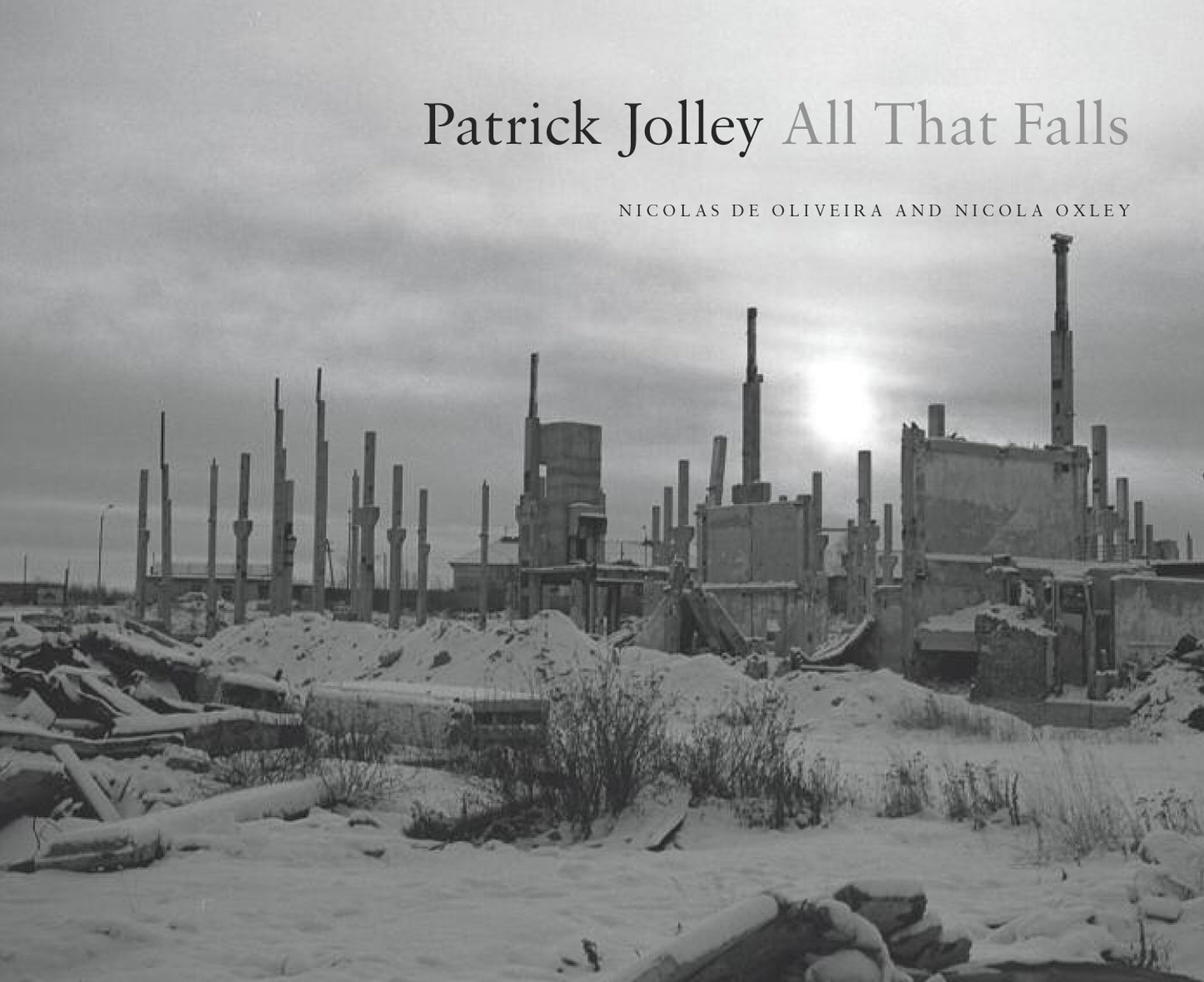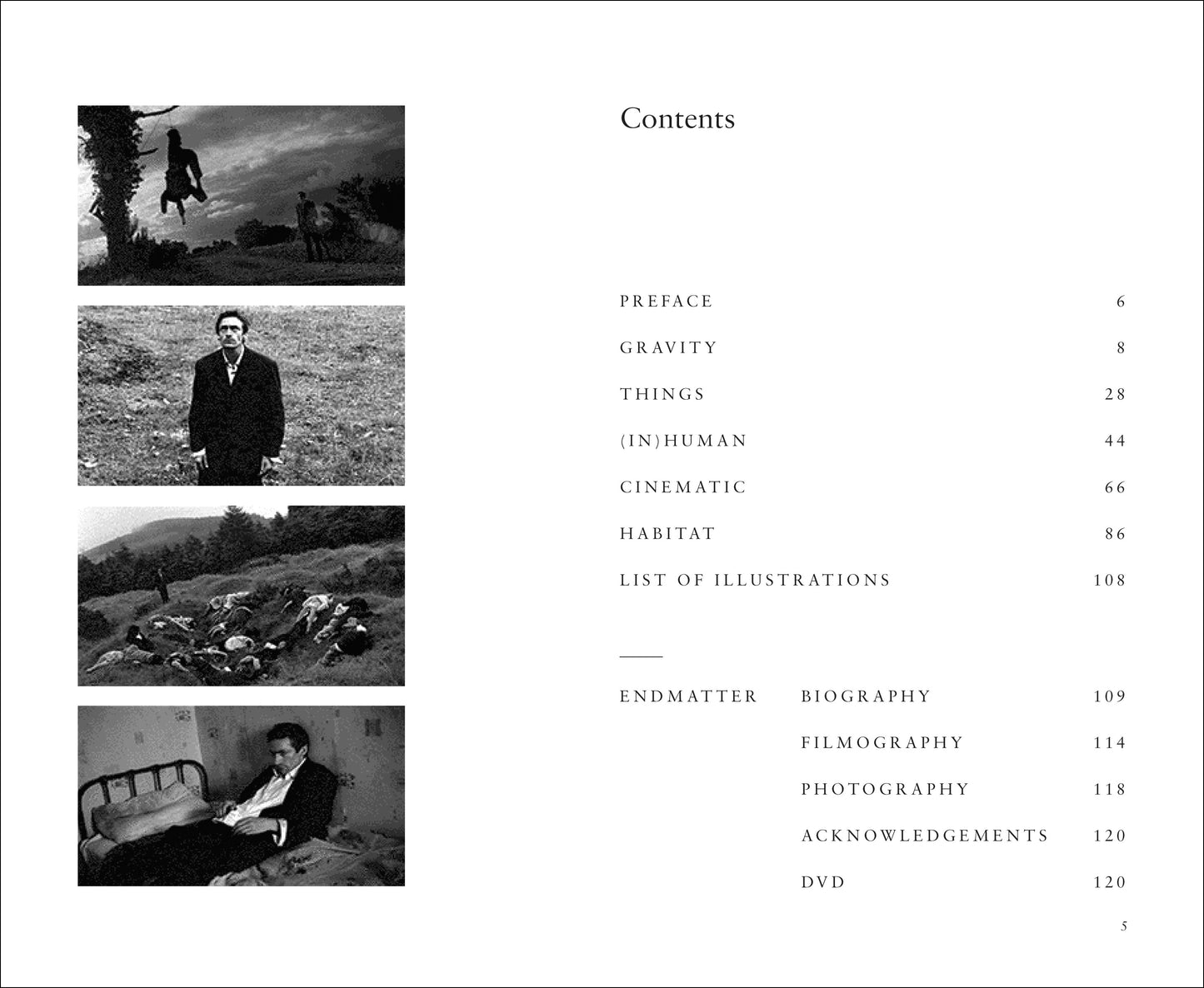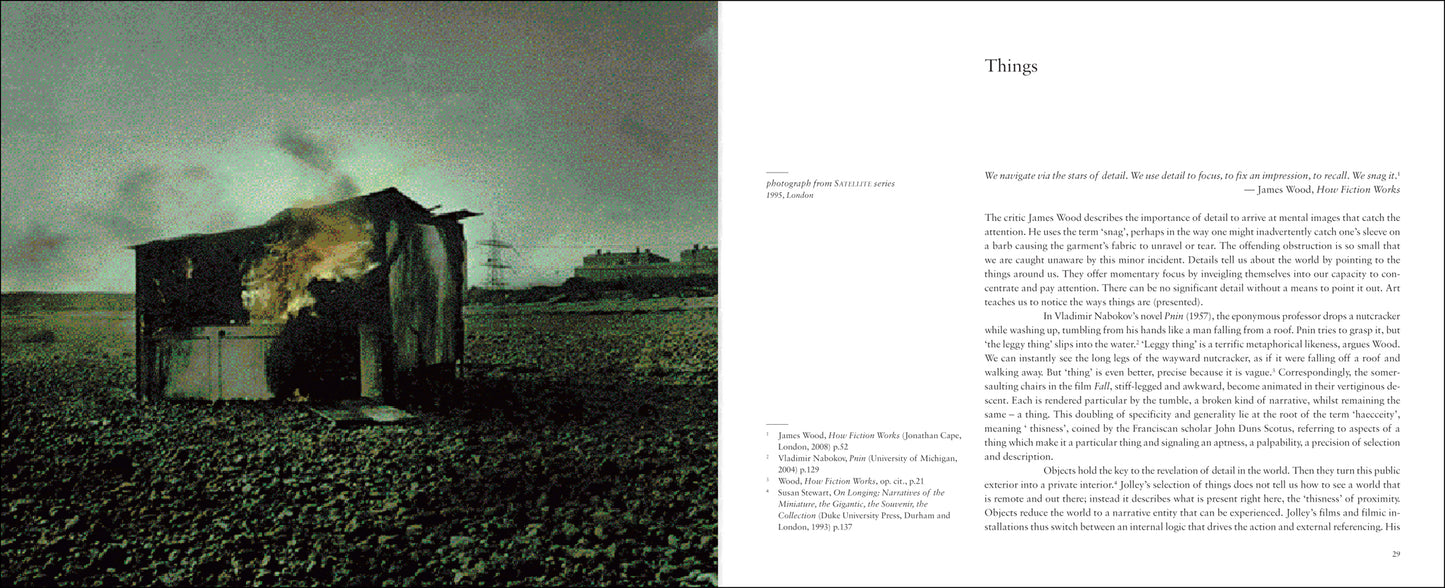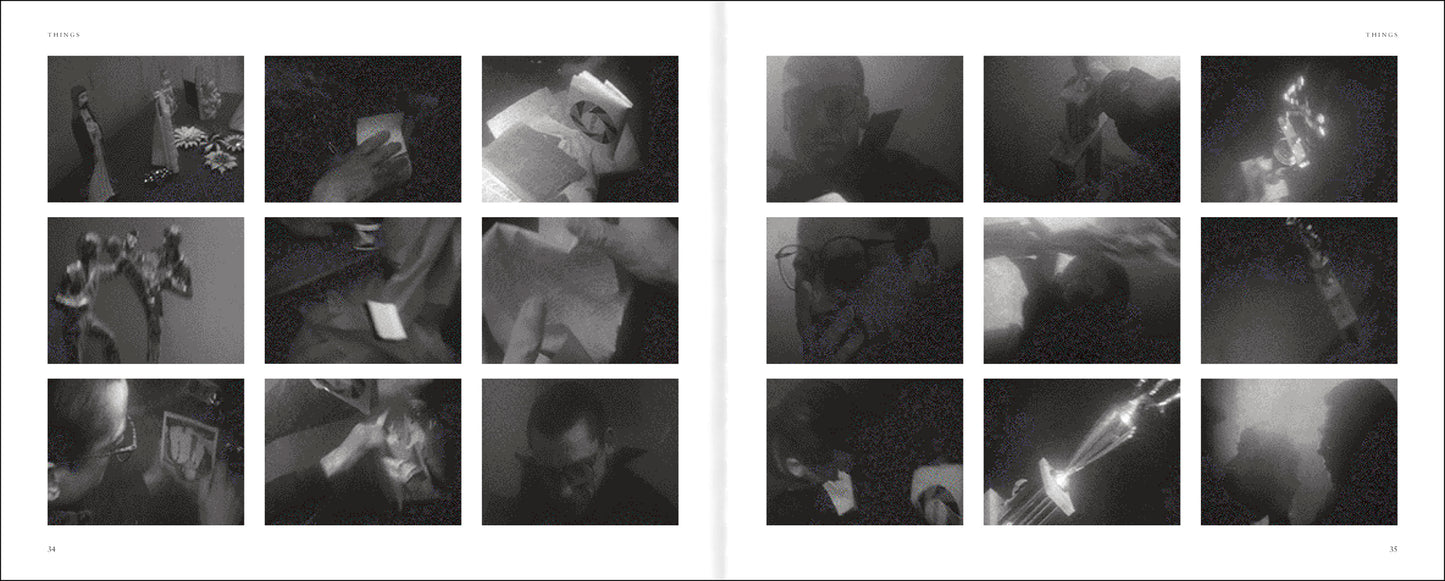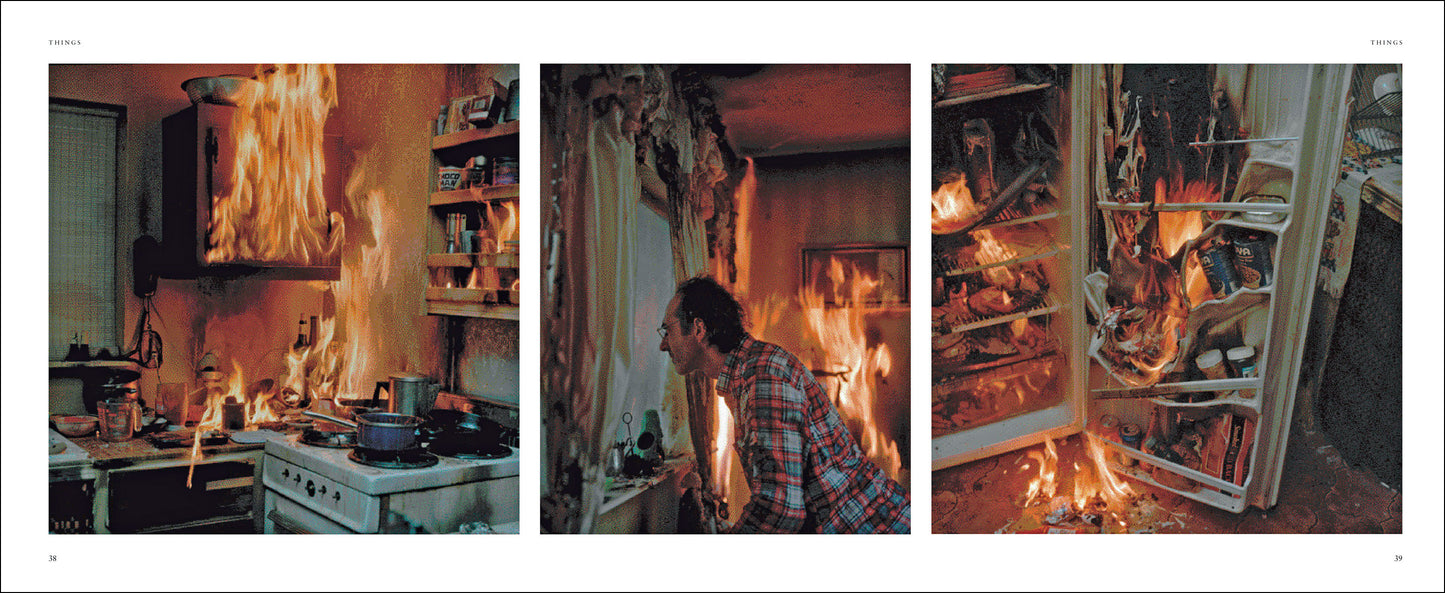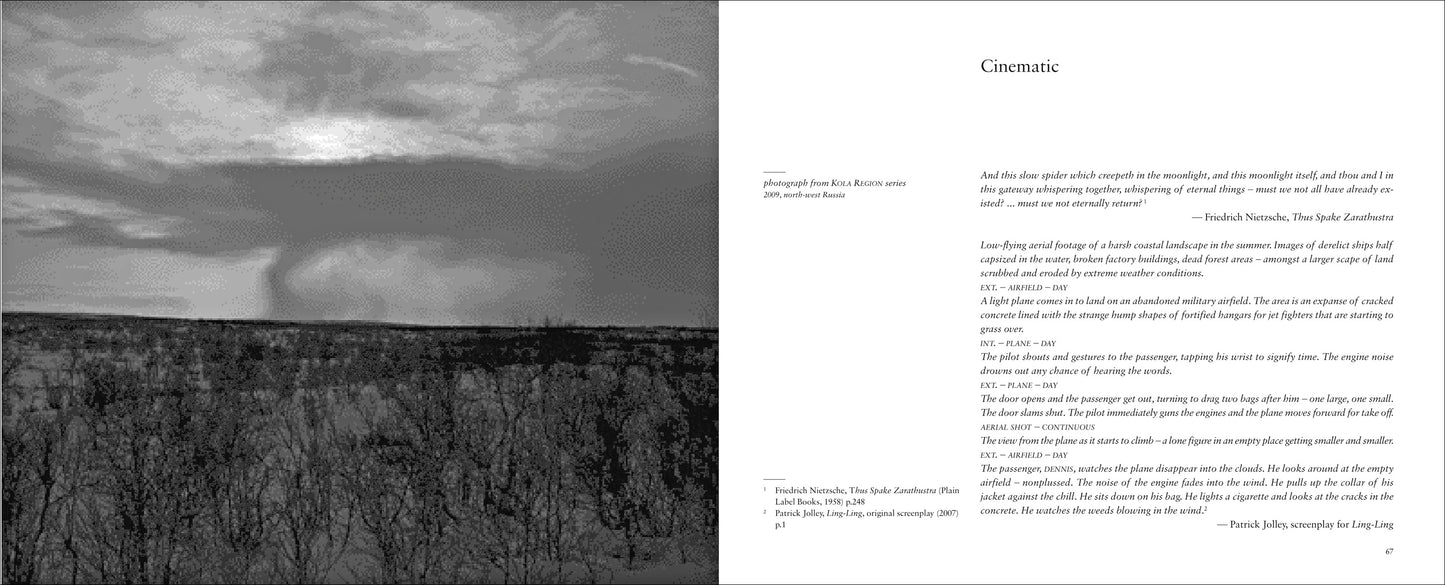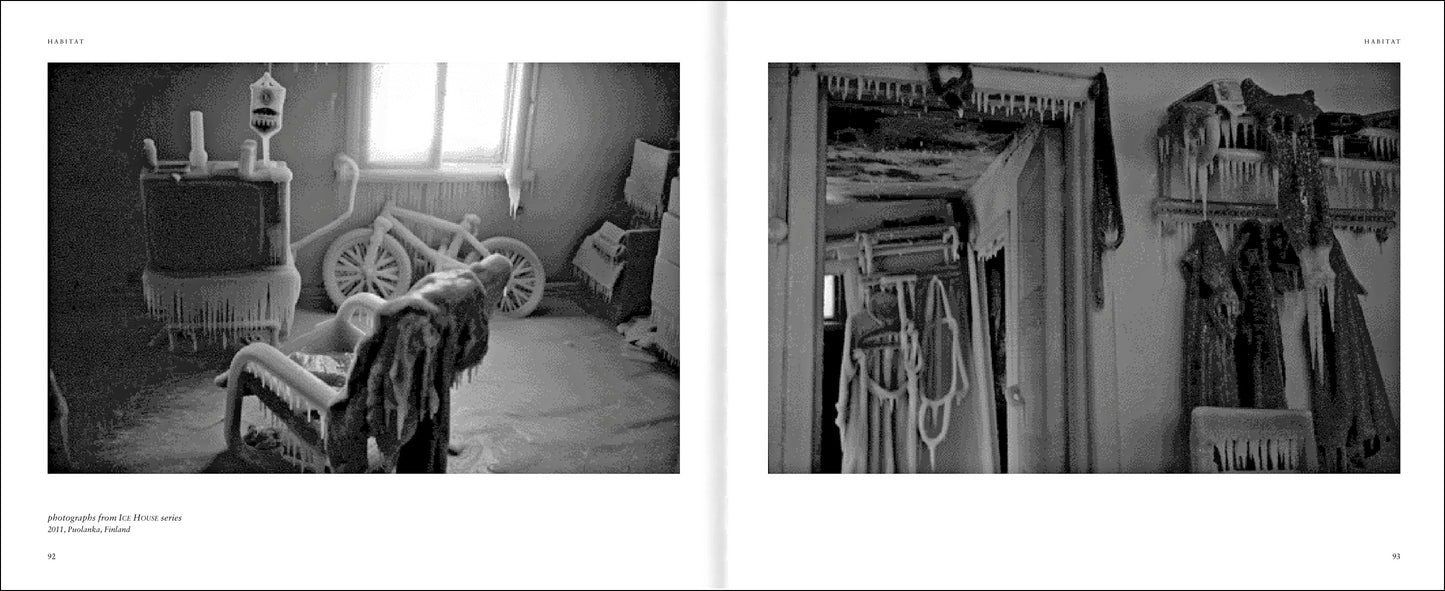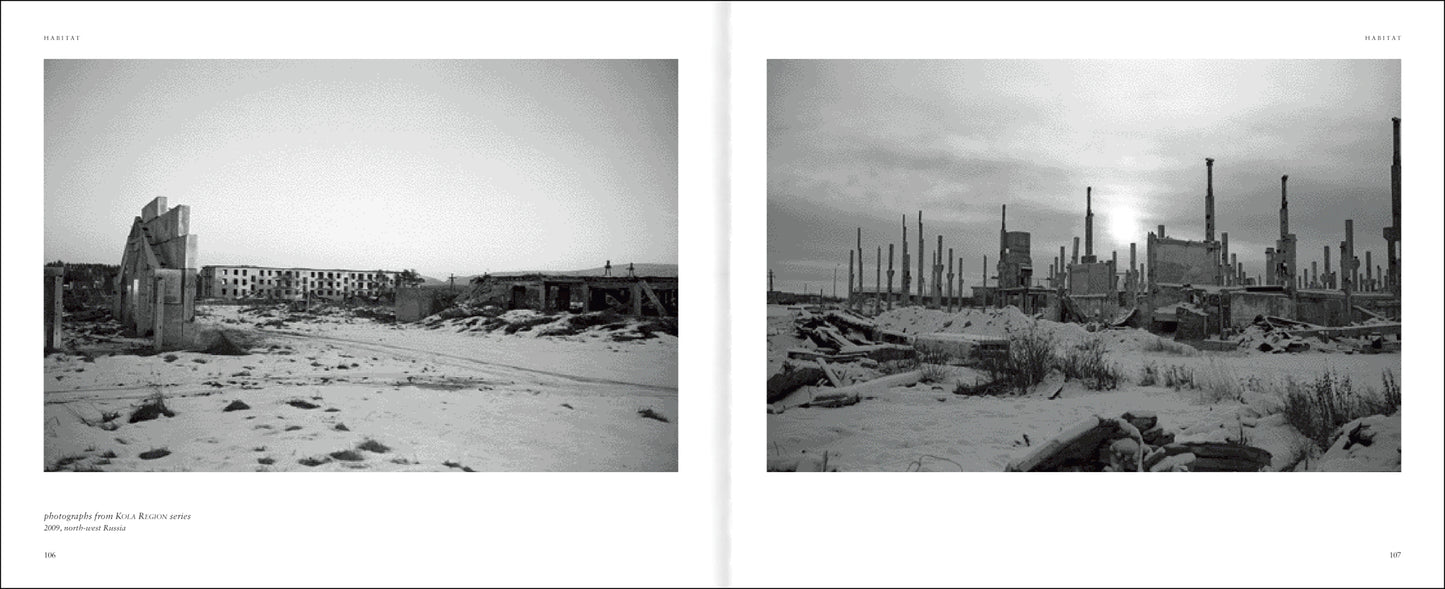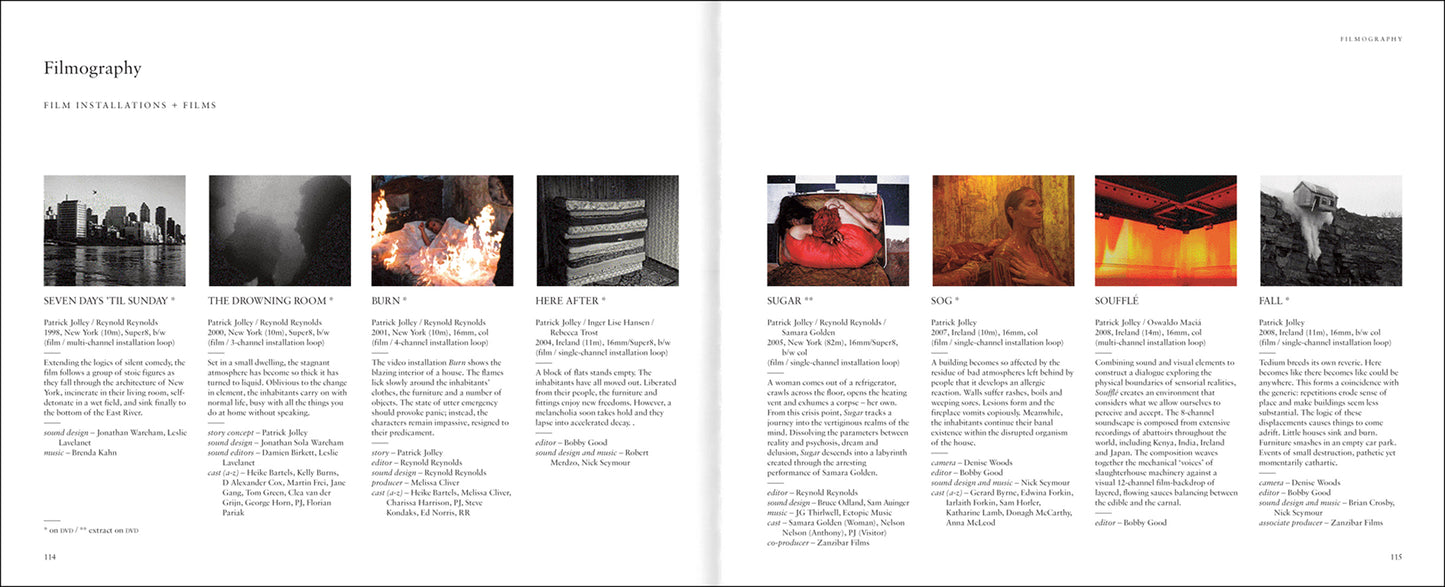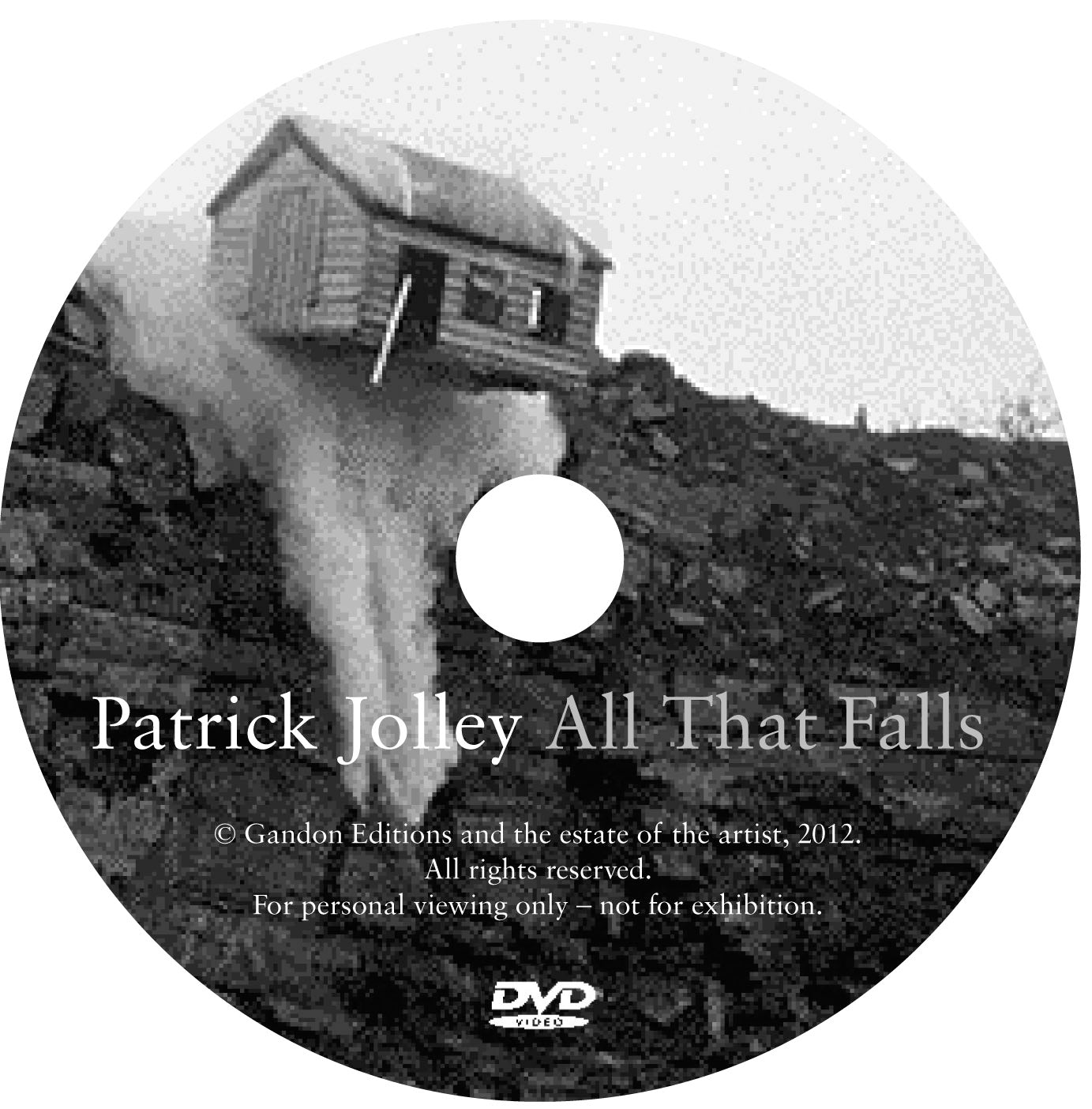Gandon Editions
PATRICK JOLLEY – All That Falls
PATRICK JOLLEY – All That Falls
Couldn't load pickup availability
Share
essay by Nico de Oliveira and Nicola Oxley
ISBN 978 0946846 993 120 pages (hardback) 20x24.5cm 324 illus + DVD
The work of Irish artist Patrick Jolley (1964-2012) spans photography, video installation and cinema. Jolley’s films use low-tech special effects to articulate those aspects of a place or situation that are present but not visible. The results are depictions of harsh and disassociated worlds, dark and redolent with melancholia, and interwoven with strands of slapstick and absurd humour. This book is the definitive study of his work. His films, video installations and photographs are underpinned by what might be termed an elemental phenomenology. The way in which Jolley employs the elements places both his subjects (and, by implication, the viewer) in a liminal place, a threshold, a transformation ... The elemental nature of the work is not, however, its subject, nor is it the chief concern of this book. Rather, these phenomena are present to the eye on the works’ surface, but it should be understood that if a work depicts a dwelling on fire or a room underwater, those elements are not necessarily its subject. Indeed, their evocative presence allows the viewer to revel in the surface (of the film), whilst concurrently being elsewhere, engaged in lucid daydreaming. — Nico de Oliveira and Nicola Oxley
EXTRACT
"Contrary to mainstream cinema, artworks tend to eschew the more obvious tropes of image-making; rarely have artists embraced direct references to horror in particular. The film Sog (2007), obliquely modelled on the ‘horror’ genre, depicts the interior of a home whose inhabitants are progressively overtaken by a viscous, slow-moving substance emanating from the fabric of the house. Every surface around them is slowly consumed by the grotesque slime that oozes and suppurates through the wallpaper making squelching and plopping noises. The material is at once horrific in its progressive action, and comedic in the sounds it generates. The house becomes a living entity whose insides are pulsing with thick and ponderous bodily fluids. It is as if the distinction between human beings and their environment is increasingly confused as their life-force drains into the surrounding dwelling. The inhabitants’ slowness becomes a key to the viewing experience. Our identification with the human beings on the screen makes us want to empathise, yet we are disgusted by their obliviousness to the deterioration of their living space and irritated by the ponderous nature of their movements which signal a resignation to a fate unknown to us."
— from the essay by Nico de Oliveira and Nicola Oxley
|
CONTENTS Preface 6 _____ DVD – FEATURED WORKS (listed alphabetically)
|
